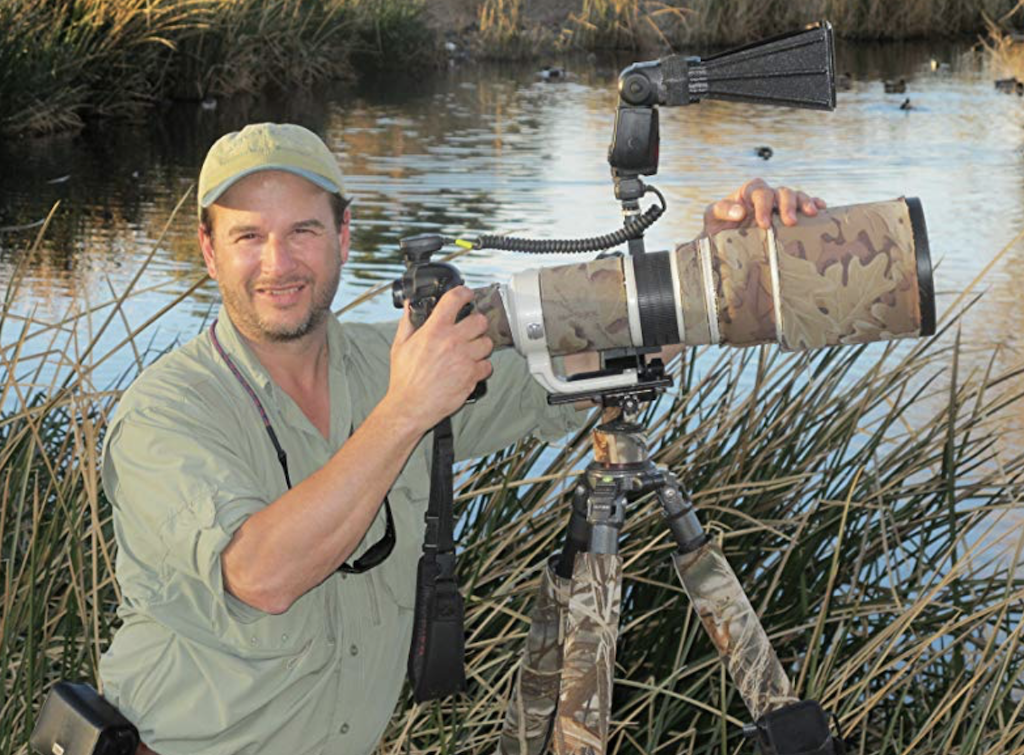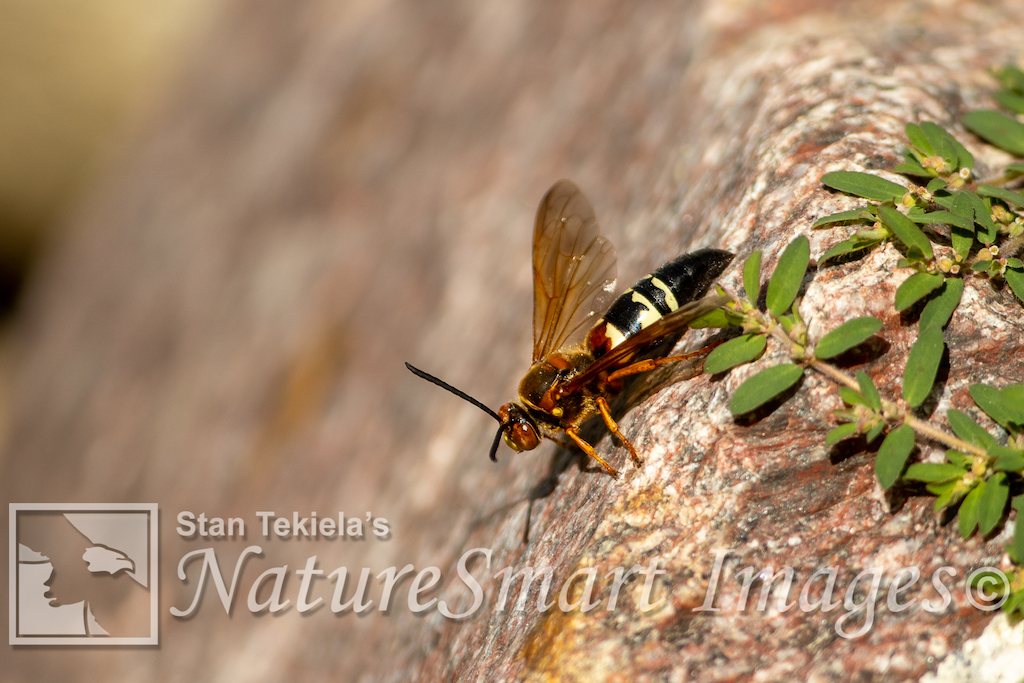Cicada Killer Wasps are Cool Critters to Watch
Stan Tekiela, naturalist and wildlife photographer par excellence, shares with us his fascination for Cicada Killer Wasps. They are cool critters and here is why.

I received a text the other day from my neighbor about a killer in our neighborhood. Immediately I was on alert and wanted to know more. After all, it’s not every day that you hear that kind of news. The next text I got included a picture of the killer and confirmed its identity. As I looked at the picture, I thought, “Yep, we’ve got trouble on our hands. I’d better get over there right away.” Of course, I’m talking about a Cicada Killer Wasp (Sphecius speciosus).
More accurately, this wasp is called the Eastern Cicada Killer because it occurs in the eastern half of the country and into the upper Midwest. It also ranges as far south as Mexico and Central America. But most people, myself included, just call it the “Cicada Killer.”
The Cicada Killer is a very large solitary wasp, ranging in size from 1 to 2 inches long. They have four large brown or golden wings, and their black abdomen (hind part) has irregularly shaped yellow stripes. Some say that it looks similar to a yellow jacket or hornet, but those are very different kinds of insects. The Cicada Killer is a ground-dwelling wasp.

Females are larger than the males. They are big enough that, when you see one for the first time, they will definitely catch your attention. The Cicada Killer is one of the largest wasps in the United States.
Now for the interesting part. Females dig underground chambers in well-drained or sandy soils, where they deposit their eggs after mating. In fact, the easiest way to find evidence of a Cicada Killer is to look for small piles of dirt that she has excavated. Often these nests are under large rocks or under asphalt driveways. They use the rock or driveway as a heat sink, to help raise the temperature of the egg chamber and incubate the egg. Often the nests are on south-facing hillsides or any place where the sun is shining to warm up the land.
So, at this point in the article, you are probably asking yourself several questions. Are these wasps dangerous? Why are they called killers? The Cicada Killer can deliver a nasty sting, but they are not an aggressive wasp and will only sting if handled roughly or stepped on. They save their stinging for something much more diabolical.
Females hunt for Cicadas, the large and noisy insects of summer, but they don’t eat them. Instead, the female wasp stings a Cicada with a paralyzing toxin. After it’s paralyzed and helpless, she flips the Cicada over and carries it upside-down back towards her nest. (The problem is, the Cicada usually weighs more than the wasp, so she must get up high in a tree so she can “glide” down towards her nest.) She then deposits the helpless Cicada into her underground chamber. She will lay a single “male” egg on the Cicada before sealing the entrance to the chamber. She will have upwards of 10 chambers per nest. When she lays a “female” egg, she will leave two or three paralyzed Cicadas in the chamber. When an egg hatches, the larval wasp (looks like a maggot) will have a fresh meal waiting for it. It is widely believed that the reason the females are larger is because they have more to eat in the larval stage. After eating, the larva will change into a pupa and then metamorphose into the adult wasp and leave the nest chamber.
As adult wasps, they are not dangerous for people. They feed on flower nectar only and rarely sting humans. The adult males hang around the nesting sites, looking for females to breed with. If you watch them, it looks like they are aggressively attacking anything that approaches the nesting chambers. In fact, they are just going out to investigate if what they are seeing is a female they can mate with. When they discover it is just a dragonfly or a honeybee, they return to their favorite perch and keep a watchful eye open for a female. If another male Cicada Killer approaches, they often fight by grabbing each other in mid-air and trying to drive the other off. When this happens, their flight pattern is erratic and they often bump into things. Eventually one lets go and is driven off. The male returns to his perch.
More than likely you have a killer in your neighborhood also. But don’t panic—they are harmless and cool critters that are fun to watch.
If you enjoyed Stan’s post, you may consider one of his amazing nature books: Majestic Eagles; The Lives of Wolves, Coyotes, and Foxes; or Backyard Birds: Welcomed Guests at our Gardens and Feeders.
You can follow Stan on Facebook and Twitter, or contact him via his web page. Stan’s nationally syndicated NatureSmart Column appears in more than 25 cities spanning 5 states (Minnesota, Wisconsin, Michigan, Illinois, and Pennsylvania) and is circulated to more than 750,000 readers.
For more stories about wildlife and nature, sign up for our newsletter now!


